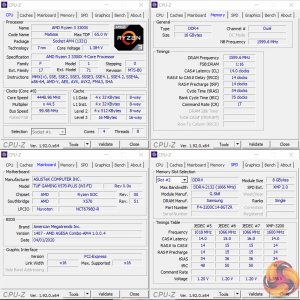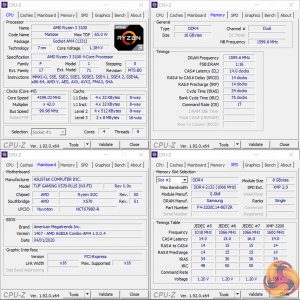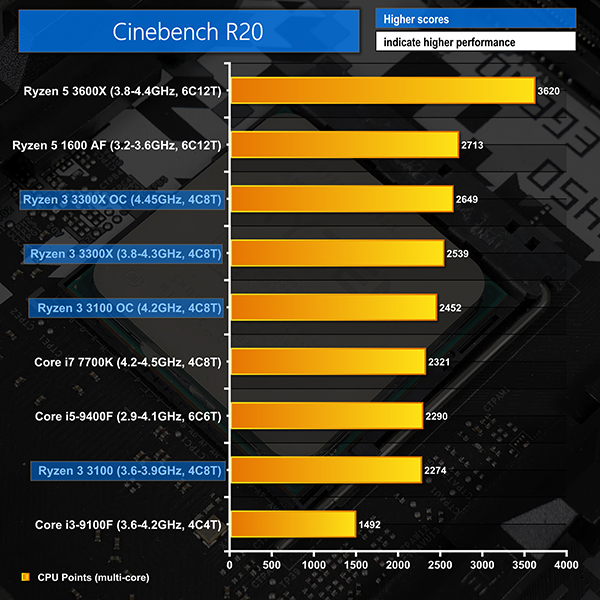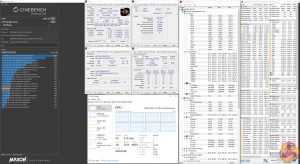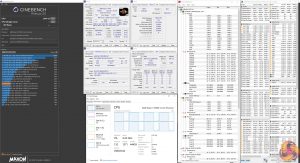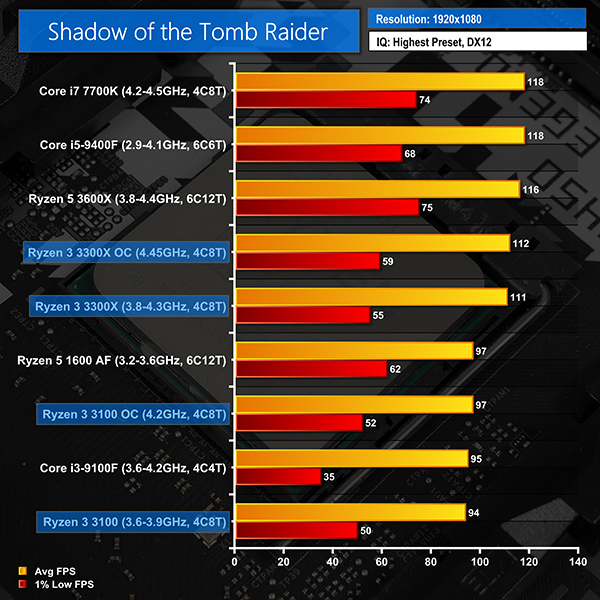AMD Ryzen 3 3300X Manual Overclocking Frequency:
We managed to push our 3300X sample to 4.45GHz using 1.4V in the ASUS UEFI. This was quick and easy and proved stable even with our budget Arctic CPU cooler.
As the 3300X is already clocked high out of the box, our overclock only added around 5W onto the package power draw and the actual load voltage barely changed.
AMD Ryzen 3 3100 Manual Overclocking Frequency:
The 3100 pushed to 4.2GHz on all cores using the same 1.4V in the ASUS UEFI. CPU package power this time increased to around 75W under Cinebench load, so cooling the overclocked chip is still an easy task.
I guess there’s a reasonable argument that the full four-core CCXs of the 3300X are higher quality silicon than the severely crippled two-core CCXs forming the 3100.
A modest but worthwhile performance gain was registered for the overclocked Ryzen 3 3300X. The 3100’s gain was slightly more noticeable as it represented a larger percentage increase from its stock frequency.
Interestingly, our overclocked testing highlights the importance of Ryzen 3 3300X’s CCX topology. The 4.2GHz overclocked Ryzen 3 3100 is just shy of the 3300X’s 4.3GHz stock-clocked frequency. However, the cheaper dual-CCX part is noticeably slower in Shadow of the Tomb Raider performance. The 16MB of local L3 cache and no inter-CCX latency are clearly a benefit for the Ryzen 3 3300X in certain scenarios.
 KitGuru KitGuru.net – Tech News | Hardware News | Hardware Reviews | IOS | Mobile | Gaming | Graphics Cards
KitGuru KitGuru.net – Tech News | Hardware News | Hardware Reviews | IOS | Mobile | Gaming | Graphics Cards


